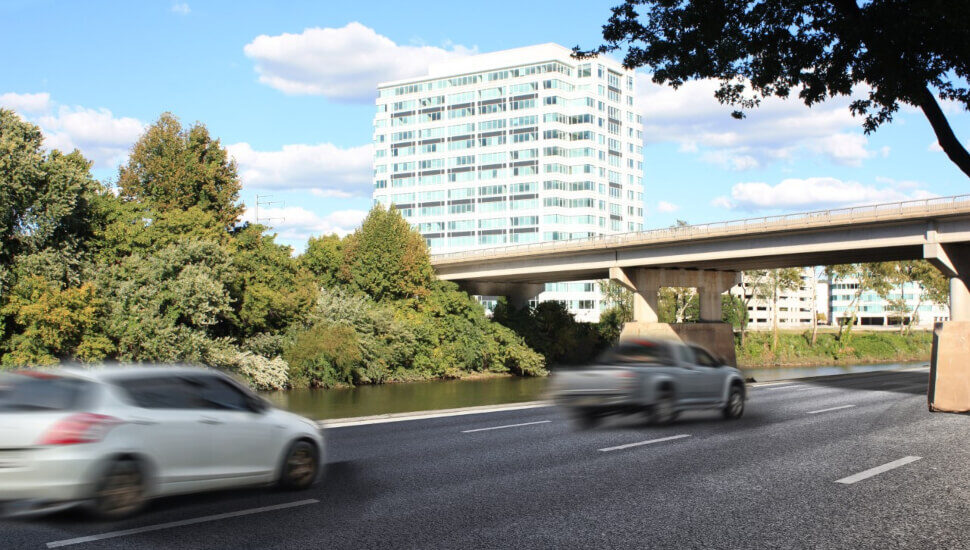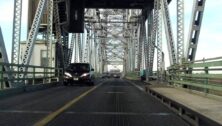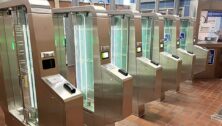PennDOT Announces Plan to Pave the Schuylkill River

Drivers who are tired of sitting in jammed traffic on the region’s busiest highway will soon be getting some relief.
PennDOT announced on Thursday that it will be paving the entire Schuylkill River, from Reading to Philadelphia and opening it up to vehicular traffic.
“Thanks to the Bipartisan Infrastructure Deal recently passed by Congress, we now have the money we need to provide those extra highway lanes that people in this region have been craving for decades,” said Mel Median, PennDOT’s Director of Extremely Special Projects, at a specially-arranged press conference in front of the Philadelphia Water Works.
“We all know that the Schuylkill Expressway was obsolete the day they finished building it in 1959. Everybody said that there was no way to add lanes to it, since it was built between solid rock cliffs and the river. We couldn’t do anything about those cliffs, but luckily, we have the river, and a hell of a lot of federal money.”
The plan — the likes of which has never been seen before anywhere in the world — is to pour concrete into the river, starting just south of Reading in Berks County and continuing all the way to the Art Museum in Philadelphia. Approximately 35 million cubic feet of high-tensile-strength concrete will be used to complete the project.
“All we have to do is pour that concrete, level it out a little, and then paint a nice double yellow line down the middle,” Median said proudly. “We’ve got it all figured out.”
The new route will parallel Route 422 and the Schuylkill Expressway, allowing commuters from places like Reading, Pottstown, Spring City, Phoenixville, and King of Prussia to make it into the city in record time.
Ironically, it will also parallel the route of the now-defunct “Schuylkill Valley Metro,” a planned commuter rail line that was scrapped in 2006 due to a lack of funding.
“We were really looking forward to that rail line,” said Eugene “Slim” Johnson, the Director of Hopeless Projects for the Delaware Valley Regional Planning Commission.
“It would have taken thousands of cars off the roads, gotten people to work faster, and eliminated a considerable amount of pollution and greenhouse gasses from the air,” said Johnson. “We had the train tracks, we had the plans — we just couldn’t get the money.”
Johnson explained that only the federal government has enough money to pay for big projects such as that one, and that he was told that the government couldn’t afford the approximately $1 billion price tag to make the commuter line a reality.
The unique nature of the project raises a number of questions about how exactly you could pave over an entire river, especially one as iconic as the Schuylkill.
One reporter asked what would happen to the crew boats that regularly race down the river near Philadelphia’s Boathouse Row.
“We’ve got that one figured out,” said Median. “We’re going to have them put wheels on the bottom of those boats. They’ll still be able to race, only it’ll be a hell of a lot faster. Plus nobody gets dunked.”
He added that a proposal to paint the road surface blue is currently awaiting funding approval in Harrisburg.
While the now-defunct rail line would have had a spur to take passengers to the King of Prussia Mall and back — a distance of just over a mile — the new plan will feature something even more innovative. According to Median, PennDOT plans to install Star Trek-style transporter tubes along the river to transport motorists to and from the mall.
“We may lose a few people in the beginning until we get the technology down. But, hey, that’s progress.”
This is not the first time that the Schuylkill River has been considered as a commuter route. Back in the 1970s, a plan was proposed to put Venice, Italy-style gondolas on the river, complete with striped-shirted boatmen who would push the boats down the river with long poles while singing opera, ferrying commuters to work in places like Conshohocken and Center City.
That plan was reportedly nixed after funding for the long poles fell through.
One reporter asked what PennDOT planned to do with the billions of gallons of water that currently flow down the river every year.
“We’ve got that one figured out,” answered Median with a smile.
“You know those terrible droughts that the western states have been having over the past few years? Our plan is to help them out by diverting the river water to the west, so it’ll go straight to Arizona and California where they need it.”
And how did they plan to get the water past the Mississippi River and the Continental Divide?
“We’re thinking we’ll let Ohio figure that one out.”
Barry Rabin and BUCKSCO.Today wish you a Happy April Fool’s Day! Barry welcomes your comments at rabinwrites@aol.com. (The quotes in this article were made up for satirical purposes, and some of the people quoted don’t even exist!)
Connect With Your Community
Subscribe for stories that matter!
"*" indicates required fields






























